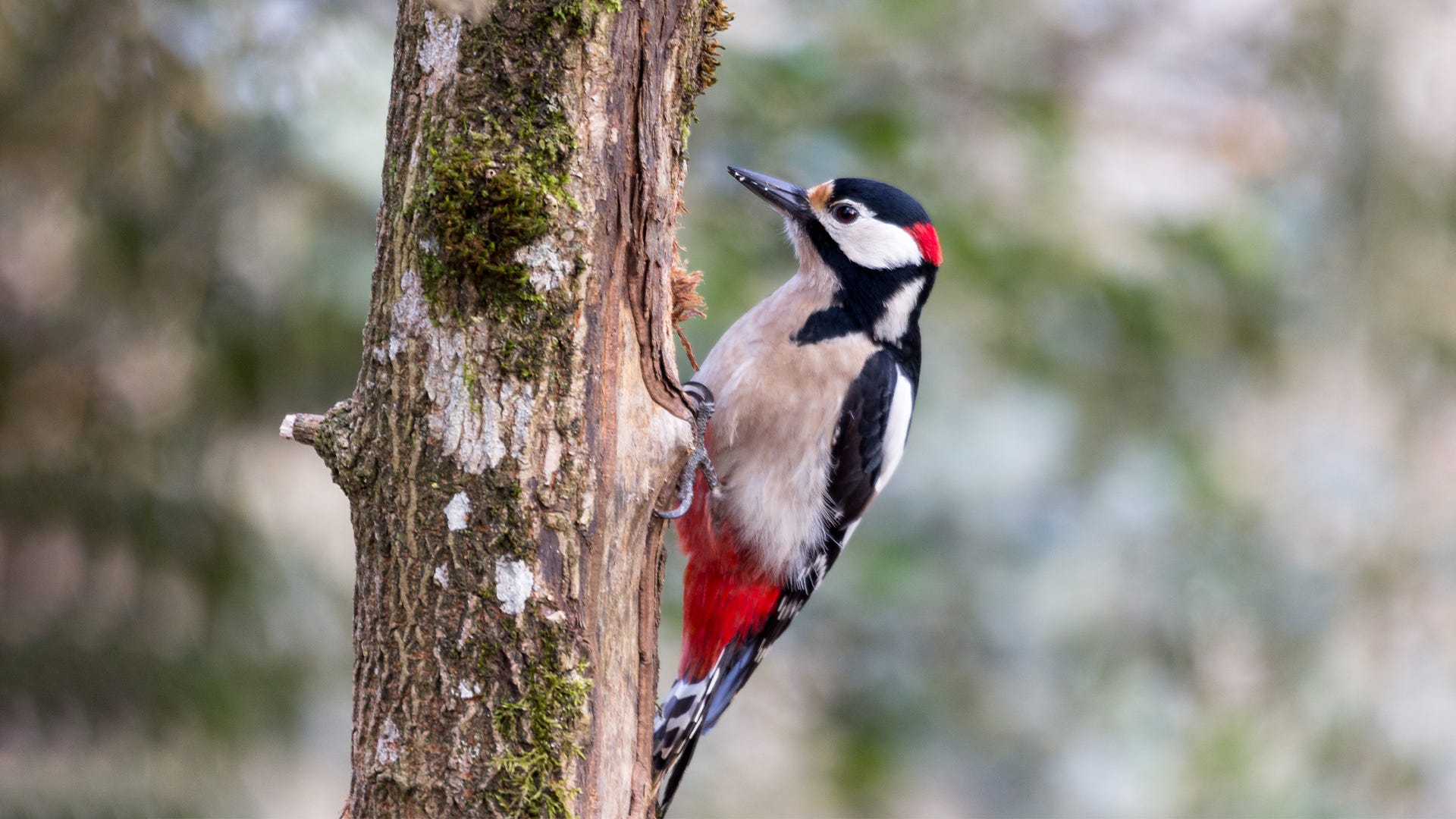Discovering Woodpeckers in Florida Habitats: Where to Identify These Birds
Discovering Woodpeckers in Florida Habitats: Where to Identify These Birds
Blog Article
Woodpeckers Unleashed: Exploring the Wonders of These Competent Tree Mountain Climbers
Woodpeckers, with their distinctive markings and balanced drumming resembling through wooded areas, hold an one-of-a-kind area in the avian globe. Their specialized makeup and adaptations enable them to browse upright surface areas with unmatched skill. Their proficiency of tree climbing is just one facet of their remarkable behavior. As we look into the complex information of woodpeckers' nesting routines, feeding techniques, and the continuous preservation initiatives to protect these remarkable birds, a deeper admiration for their place in nature unfolds.
Composition and Adaptations
When checking out the anatomy and adaptations of woodpeckers, one can observe impressive functions that make it possible for these birds to prosper in their specialized ecological niche. Woodpeckers are equipped with a suite of one-of-a-kind physiological attributes that help them in their woodpecking habits. One of the most popular functions is their solid, chisel-like beak, which is specialized for drilling into timber to discover insects or create nesting cavities. This beak is supported by solid neck muscles and a highly created head structure that acts as a shock absorber, allowing woodpeckers to repeatedly eat trees without creating mind injury. Additionally, woodpeckers have zygodactyl feet, with two toes encountering forward and 2 encountering backwards, giving a company grasp on tree trunks while they search for food or drum for interaction.
Furthermore, woodpeckers have an unique tongue structure that is long, barbed, and sticky, enabling them to draw out pests from gaps in timber. This specialized adaptation enables woodpeckers to manipulate a food source that is hard to reach to numerous various other bird varieties. Generally, the anatomy and adjustments of woodpeckers display the impressive transformative solutions that have enabled these birds to flourish in their arboreal habitat.
Drumming Habits
Having actually discovered the anatomy and adjustments of woodpeckers, the emphasis currently moves to recognizing their drumming habits, a distinctive aspect of their communication and territorial display screens. Drumming is an important type of communication amongst woodpeckers, serving several objectives such as establishing regions, drawing in mates, and signaling alarm. Each woodpecker types has an one-of-a-kind drumming pattern that aids people identify participants of their own types and differentiate them from rivals or predators.
Woodpeckers generate drumming sounds by quickly pecking on resonant surfaces such as dead trees, energy posts, or also steel items, developing a series of rhythmic beats. The intensity and speed of drumming can differ based upon the purpose; for circumstances, a rapid drumming sequence may signify hostility in the direction of intruders, while a slower and softer drumming pattern might indicate courtship (Woodpeckers in Florida). In addition, woodpeckers may readjust the frequency and period of their drumming to share specific messages efficiently
Nesting Habits
Discovering the nesting behaviors of woodpeckers exposes fascinating understandings into their reproductive habits and Find Out More environment selections. Woodpeckers are recognized for their distinct nesting preferences, often excavating cavities in find this trees to develop sheltered spaces for increasing their young. These cavities offer not only as a nesting website but additionally as a protected haven from killers and stormy weather.
Woodpeckers exhibit a high degree of integrity to their nesting websites, frequently returning to the same place time after time. This actions highlights the importance of ideal habitat availability for their reproductive success. The choice of a nesting website is crucial for woodpeckers, with aspects such as tree varieties, elevation, and degeneration stage playing considerable duties in their decision-making procedure.
Interestingly, some woodpecker species are recognized to excavate several dental caries within their area, giving themselves with alternate nesting choices. This approach may work as a type of insurance coverage versus possible hazards or disruptions to their main nesting website.

Feeding Methods
One of the most unique feeding actions of woodpeckers is drumming, which involves rapid pecking on trees to uncover insects below the bark. Woodpeckers are also recognized to dig deep into dental caries in trees to access covert insect larvae or sap. Some species, like the acorn woodpecker, shop nuts in particularly produced holes called granaries.
Preservation Efforts
Amidst the detailed feeding techniques exhibited by woodpeckers, the preservation efforts focused on protecting these fascinating birds play a vital role in protecting their habitats and populations. Woodpeckers deal with various threats to their survival, including habitat loss due to deforestation, climate change altering their ecosystems, and crashes with man-made frameworks such as buildings and automobiles - Woodpeckers in Florida. Guardians are proactively functioning to deal with these challenges and make sure the long-term well-being of woodpecker varieties

Education and learning and public recognition campaigns are likewise vital elements of woodpecker preservation efforts. By increasing awareness about the relevance of these birds in keeping healthy forest ecological communities, guardians can gather assistance for environment preservation efforts and advertise responsible land administration techniques. Through joint initiatives between scientists, policymakers, and regional communities, we can work with each other to safeguard a future where woodpeckers prosper in their all-natural environments.
Verdict

Report this page